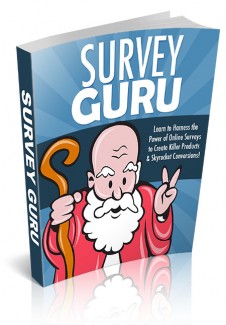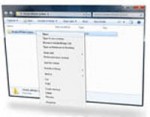
 License Type: Personal Use
License Type: Personal Use  File Size: 2,006 KB
File Size: 2,006 KB File Type: ZIP
File Type: ZIP
 SKU: 51631
SKU: 51631  Shipping: Online Download
Shipping: Online Download
Ebook Sample Content Preview:
Prospect - Someone who doesn’t know your product and probably doesn’t know who you are comes to your sales page.
Lead - That prospect enters their email address into your opt-in box to receive a free report as advertised in a popup on your sales page. That person then becomes a lead.
Buyer - The prospect reads your free report and likes the content, and then returns to the sales page to finish reading it, finally buying the product.
OTO Buyer - The buyer reads your One Time Offer (OTO) and decides to purchase this offer as well.
If you notice a lot of people making it to one particular stages but making it no further, you might want to send your leads a survey asking them why they aren’t making it past that stage. You could also make this a popup on your website for people who leave your page without buying.
Customer Satisfaction Improvement
Finally, you can use surveys to improve your customer satisfaction, making people buy more products from you, trust you, and become loyal (potentially even avid) fans, who might even tell others about you.
As you probably know, customer service is one of the most important aspects of business. If you keep buyers happy, you minimize problems.
And if you respond quickly to the few problems you do have, you’ll ensure your customers always stay happy.
Surveys are a great way to ensure customer satisfaction. You can use surveys to improve satisfaction in the following ways:
Ask how their experience was after using your help desk or customer service email or phone number.
Ask them how they are enjoying the product after they buy, and if they have any questions or concerns.
Ask them what you can do better in general sense.
Tips for Creating Great Surveys
Surveys are only useful if people are willing to take them, and unfortunately, most online surveys are not conducive to getting people to complete them. People don’t have a lot of time to waste, and they certainly aren’t going to spend several minutes taking a survey just to help your business.
Here are some ways you can
1. Keep Surveys Short - One of the biggest mistakes people make with surveys is trying to find out too much at once. People have lives. They are busy. They don’t have a lot of time to help you, even if they really want to. So when you create a survey, make it short and easy to take. Ask no more than five or six questions, and make as many of those questions as possible multiple choice in order to make taking the survey go as quickly as possible.
2. Ask On-Point Questions - Never go off on a tangent and start asking questions that are unrelated to your main topic. Stick to asking specific questions that related to your primary objective. If you have multiple objectives, use different surveys.
3. Don’t Use Leading Questions - Never ask questions that try to lead a survey taker to answer in a specific way in order to try to trick them into feeling a certain way about your company. For example, do not say, “As you know, the Mega Sales System is the top of its class for helping you generate more sales. How do you feel this product best meets your needs?” Instead, just ask, “What did you like most about this product?”
4. Use Multiple Choice - Don’t make people work too much. Keep most questions multiple choice, and keep potential answers to six or fewer. The harder it is to take a survey, the fewer people will fill it out.
5. Don’t Get Personal - Ask as little personal information from respondents as possible. If you don’t need their phone number, don’t ask for it. Again, the more personal information you ask for, the fewer people will fill out your survey.
6. Ensure Privacy - Let people know you won’t share any of their personal information, and that survey data will be kept anonymous. This will make people feel like they won’t be spammed and that they won’t have to be embarrassed to answer how they really feel.
- File Size:2,006 KB
- License: Personal Use
- Category:Ebooks
- Tags:2014 Ebooks Personal Use







